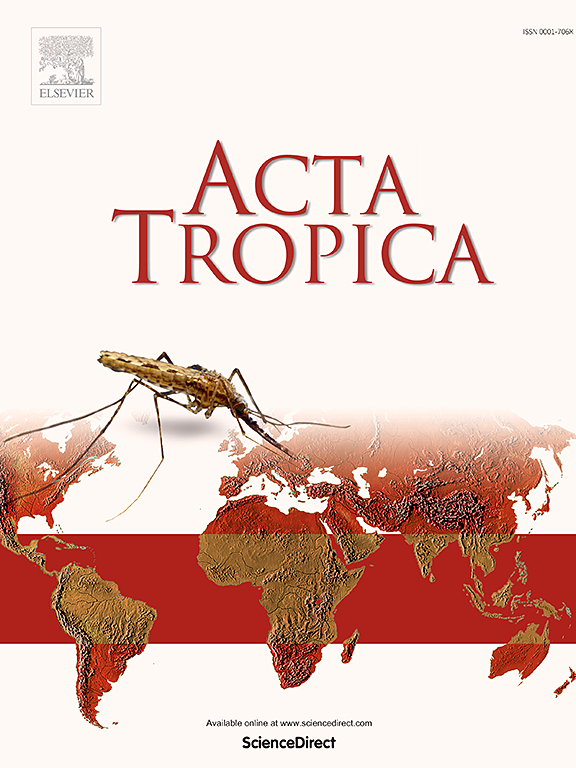Molecular detection and diversity of Bartonella spp. in non-hematophagous bats from the Peruvian Amazon
IF 2.1
3区 医学
Q2 PARASITOLOGY
引用次数: 0
Abstract
The Bartonella genus comprises a variety of species capable of infecting a wide range of mammals through hematophagous arthropods, such as fleas, ticks, flies, and lice. Domestic (dogs and cats) and wild (rodents and bats) reservoirs harbor species with zoonotic potential. This molecular study identified the diversity of Bartonella spp. in bats from the Peruvian Amazon. Blood samples from 62 bats were molecularly analyzed for the detection of Bartonella spp. by amplification of the 16S–23S internal transcribed spacer (ITS) region and the citrate synthase (gltA) gene. The ITS region amplification revealed the presence of Bartonella spp. DNA in 12 bats (19.4 %). These bats were four Carollia perspicillata, three Uroderma bilobatum, two Phyllostomus hastatus, a Platyrrhinus infuscus, and a Noctilio albiventris. Partial analysis of the gltA gene successfully assessed Bartonella genetic variants in 11 of the ITS-positive samples. Eleven genetic variants were identified, with differences ranging from 0.3 % to 18.0 % among them. Both a bat N. albiventris and a specimen of C. perspicillata exhibited two variants previously detected in N. albiventris from French Guiana and the bat fly Strebla guajiro collected from C. perspicillata in Brazil. The remaining nine variants correspond to newly identified Bartonella variants in bats. The results revealed a remarkable diversity of Bartonella spp. among bats in the Americas. These findings expand knowledge on the genetic variability of Bartonella infection in these mammals and provide new insights into the ecology of bat-borne Bartonella species.

求助全文
约1分钟内获得全文
求助全文
来源期刊

Acta tropica
医学-寄生虫学
CiteScore
5.40
自引率
11.10%
发文量
383
审稿时长
37 days
期刊介绍:
Acta Tropica, is an international journal on infectious diseases that covers public health sciences and biomedical research with particular emphasis on topics relevant to human and animal health in the tropics and the subtropics.
 求助内容:
求助内容: 应助结果提醒方式:
应助结果提醒方式:


